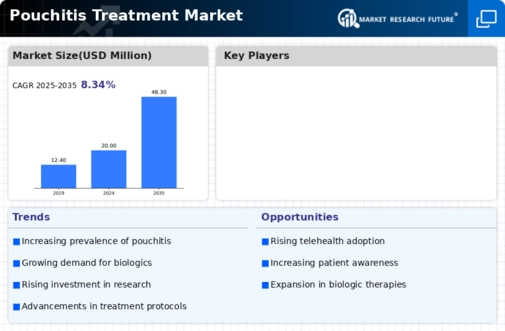US America Pouchitis Treatment Market Summary
The US Pouchitis Treatment market is projected to grow significantly from 20.0 USD Million in 2024 to 48.3 USD Million by 2035.
Key Market Trends & Highlights
Pouchitis Treatment Key Trends and Highlights
- The market is expected to experience a compound annual growth rate (CAGR) of 8.34% from 2025 to 2035.
- By 2035, the market valuation is anticipated to reach 48.3 USD Million, indicating robust growth potential.
- In 2024, the market is valued at 20.0 USD Million, reflecting the current demand for pouchitis treatments.
- Growing adoption of advanced treatment options due to increasing awareness of pouchitis is a major market driver.
Market Size & Forecast
| 2024 Market Size | 20.0 (USD Million) |
| 2035 Market Size | 48.3 (USD Million) |
| CAGR (2025-2035) | 8.34% |

